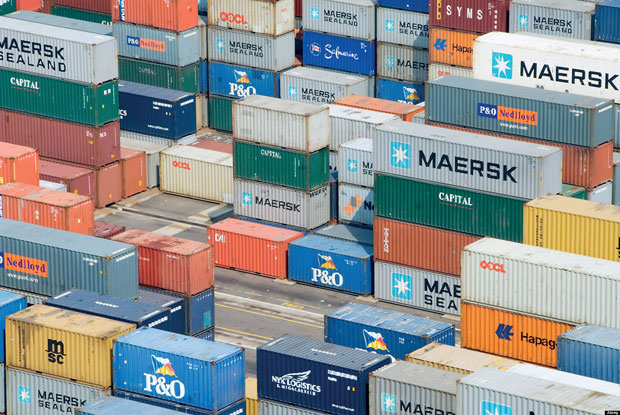Reply To:
Name - Reply Comment
Last Updated : 2024-04-26 16:02:00

By Anushka Wijesinha
This month marks 10 years since the biggest meltdown in financial markets the world has seen – the global finance crisis (GFC). A decade on since then, developed and developing countries are just about getting back to normal, albeit a ‘new normal’ of tepid growth, slower trade and investment, unconventional monetary policy and strained labour and financial markets.
The last two and a half years in particular have been a topsy-turvy ride for the global economy. A fragile recovery in parts of Europe, a vote by Britain to leave the European Union (EU), recovery in jobs and investment in the US, protectionist rhetoric from leaders in leading liberal economies, anti-globalisation pressure from disenchanted voters, questions around China’s new growth trajectory, slowdown in trade, shipping lines under stress and buoyancy in parts of emerging Asia.
Last year saw one of the worst years for global trade, with trade growth at the slowest rate since the financial crisis. Yet, the latest IMF World Economic Outlook (July 2017 edition) provides some signs for optimism.
Normalcy returning but a ‘new normal’
According to the International Monetary Fund’s (IMF) latest World Economic Outlook report, global growth is projected to be at 3.5 percent in 2017 and 3.6 percent in 2018. Although the forecasts for the US and UK were revised slightly downward to 2.1 percent from 2.3 percent in April and to 1.7 percent (from 2.0 percent), respectively, growth elsewhere will counterbalance this.
In its latest report, the IMF revised upward its growth projections for emerging economies in Europe, economies of China and Japan and more broadly for emerging and developing Asia. Meanwhile, in the US, the Federal Reserve steadily continues the exit from the ‘ultra-easy’ monetary policy stance followed since the crisis, adding to the growing sense that normalcy might be returning.
IMF Chief Economist Maurice Obstfeld, writing alongside the release of the report, asserted that the recovery in global growth is “on a firmer footing” than previously estimated and that “there is now no question mark over the world economy’s gain in momentum”.
Over the past few months, the outlook for world trade has been under particular stress on account of the political turbulence in some of the world’s key developed and emerging economies – whether it is the US and UK or Brazil and Turkey.
As Nobel prize-winning economist and renowned growth theorist Michael Spence argued in a recent article, “The world’s major economies are experiencing a steady recovery and financial markets are showing no signs of convulsion, even as monetary stimulus is gradually withdrawn. This is all the more remarkable when one considers the sharp increase in risk stemming from profound political dysfunction.”
He who pursues protectionism
One of the most disconcerting features of the current global trade scenario is the tendency towards protectionism by advanced economies, as agitations by domestic constituents reach fever pitch and globalization and trade are blamed. This is most evident in the US. Hitherto the bulwark of a liberal trading regime, the US has begun sharpening its protectionism tools – from filing anti-dumping measures to mooting thinly veiled para-tariffs like a ‘Border Adjustment Tax’, with President Trump leading the charge. To be sure, advanced economies like the US have reasons to despair.
While the increasingly protectionist stance is deeply concerning to many of economists, Ken Rogoff (former Chief Economist at the IMF) argues that it is not surprising, given how China operates. He says, “Many Chinese steel plants have state-of-the-art pollution controls but these can be switched off to save costs. When the result is that excess output is dumped at cheap prices into world markets, Western countries are fully justified in taking countermeasures.”
It is ironic then, but unsurprising, that we hear China’s leader extolling the virtues of globalisation, while we hear America’s leader threaten to recoil from it. Xi Jinping, the new advocate for freer trade, remarked in Davos earlier this year: “Pursuing protectionism is like locking oneself in a dark room. While wind and rain may be kept outside, that dark room will also block light and air. No one will emerge as a winner in a trade war.”
Protectionism abating, except in the US?
A good source of insight on the status of protectionist worldwide is the Global Trade Alert database and report, led by trade economist at the University of St. Gallen, Simon Evenett. The bad news is that the US commercial policy has become ever more protectionist. Sri Lanka too was affected. Discriminatory measures by the US on Sri Lanka has risen from three in 2014 to 11 in 2017, while liberalising measures have fallen from nine to zero over the same period. The good news is that things are getting better elsewhere. Despite the US’ actions, the rest of the G20 has been resorting to less protectionism. Overall, 2017 has so far seen the sharpest reduction in new trade-restrictive interventions deployed, since 2009.
Not just import restrictions
Much of the tension, however, is not around blatant tools like import restrictions. It is around subsidies. Out of the measures deployed in the last eight years, while 18 percent were import tariffs and 15 percent were anti-dumping measures, 14 percent were financial grants and preferential trade finance. By 2016, ‘state loans’ had entered the top five policy instruments used by governments in the G20.
 The latest Global Trade Alert notes, “Import restrictions are far less important trade distortions for most G20 governments than those created by state largesse given to farmers and manufacturers and by fiscal incentives for exporters that seek to gain market share from trading partners in overseas markets.”
The latest Global Trade Alert notes, “Import restrictions are far less important trade distortions for most G20 governments than those created by state largesse given to farmers and manufacturers and by fiscal incentives for exporters that seek to gain market share from trading partners in overseas markets.”
This has important implications for Sri Lanka’s own efforts at calibrating trade, investment, fiscal and industrial policies. At a time when conventional ‘Washington Consensus’ wisdom has been abandoned by the Washington institutions themselves, Sri Lanka must re-strategise its trade and industrial policies smartly and anchor them to the country’s economic goals and current realities.
Sri Lanka can observe and learn from what is unfolding in the advanced economies and pay greater heed to charting a smarter trade strategy. We must be adequately armed to fight any further rise in protectionism, while ensuring our own trade strategy is on the offensive. But let’s not mistake ‘being offensive’ with ‘being protectionist’. Rather, we need to be smart, savvy and proactive. To keep the nationalist or protectionist voices at bay, we must ensure policymakers do more to help build export capacity – through real reforms – beyond the current ‘go-to’ policy tool of FTAs.
As Andrew Mackenzie, CEO of Australian minerals giant BHP Billiton, wisely remarked earlier this year, “[We should] push hard on political leaders who choose to avoid some of those difficult and real reforms that are required and [instead] go for some of the false gods of protectionism and nationalism.”
(Anushka Wijesinha is Chief Economist at the Ceylon Chamber of Commerce. This article is part of the chamber’s ‘Trade Intelligence for the Private Sector’ (TIPS) initiative. Write to eiu@chamber.lk to engage)

Add comment
Comments will be edited (grammar, spelling and slang) and authorized at the discretion of Daily Mirror online. The website also has the right not to publish selected comments.
Reply To:
Name - Reply Comment
US authorities are currently reviewing the manifest of every cargo aboard MV
On March 26, a couple arriving from Thailand was arrested with 88 live animal
According to villagers from Naula-Moragolla out of 105 families 80 can afford
Is the situation in Sri Lanka so grim that locals harbour hope that they coul